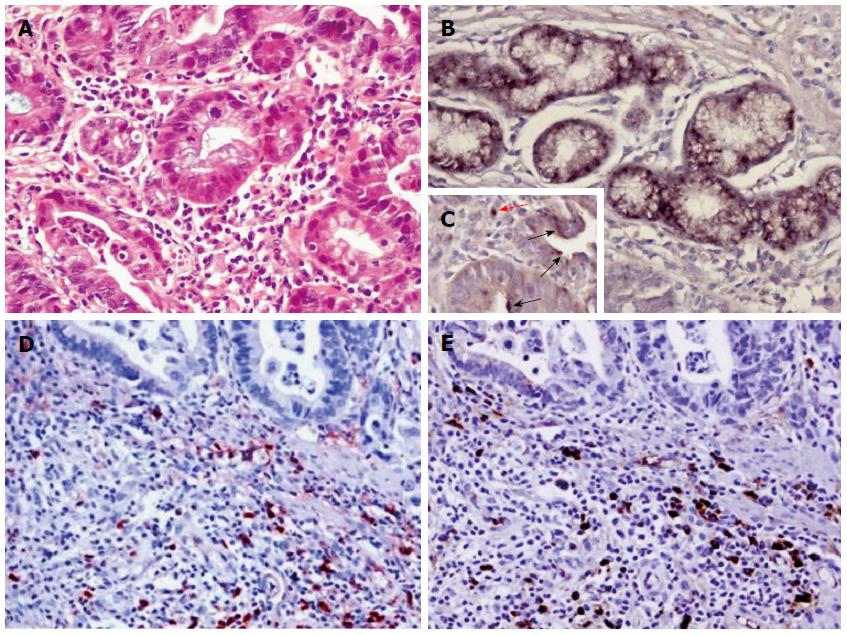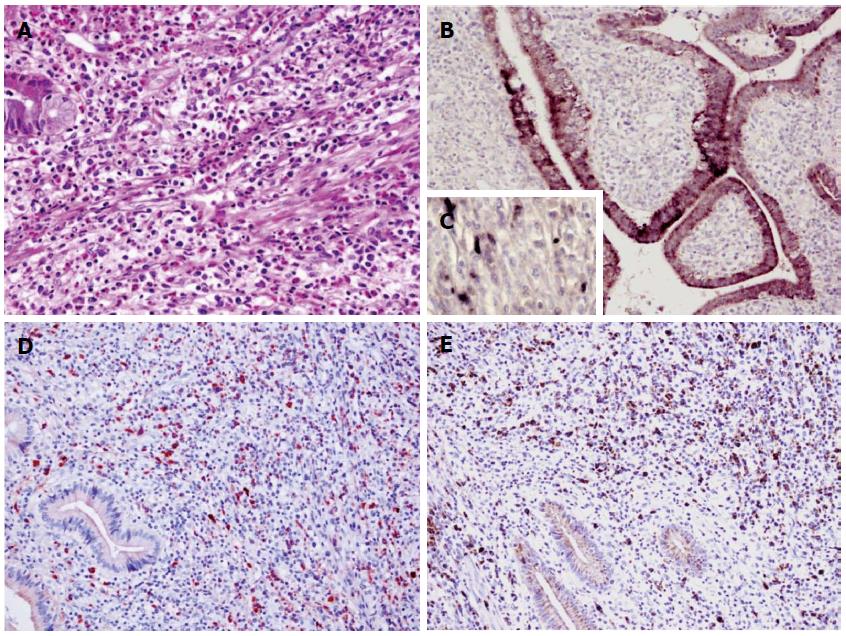Copyright
©The Author(s) 2015.
World J Gastroenterol. Mar 21, 2015; 21(11): 3429-3434
Published online Mar 21, 2015. doi: 10.3748/wjg.v21.i11.3429
Published online Mar 21, 2015. doi: 10.3748/wjg.v21.i11.3429
Figure 1 Computed tomography images of autoimmune cholecystocholangitis and pancreatitis.
Diffuse gallbladder wall thickening (white arrow) and intrahepatic bile duct dilatation (A), thickening of the common bile duct wall (black arrow) and diffuse swelling pancreas with loss of lobulation (B), and a dramatic recovery in the size of the pancreas after 4 wk of steroid therapy (C).
Figure 2 Histological findings of the needle biopsy specimen of the pancreas.
HE staining shows numerous lymphoplasmacyte infiltration and storiform fibrosis (A). Immunostaining shows Helicobacter pylori-positive cells (B) or IgG4-positive plasma cells (C) in the needle specimen sections of the patient. Original magnification × 400 (A, B and C).
Figure 3 Histological findings of the endoscopic biopsy specimen from the pylorus.
HE staining shows a moderately differentiated gastric adenocarcinoma with abundant infiltration of lymphoplasmacytes and eosinophils in stroma (A). Immunostaining reveals Helicobacter pylori in gastric epithelial cells (B) or cancer cells (black arrow, C) or mesenchymal cells (red arrow, C), IgG4-positive (D) or IgG-positive plasma cells (E) in the cancer stroma. Original magnification × 400 (A, B and C), × 200 (D and E).
Figure 4 Histological findings of the resected gallbladder specimen.
HE staining shows abundant infiltration of lymphoplasmacytes and eosinophils (A). Immunostaining shows Helicobacter pylori in the epithelium (B) or mesenchymal cells (C), IgG4-positive (D) or IgG-positive plasma cells (E) in the resected gallbladder sections of the patient. Original magnification × 400 (A and C); × 200 (B, D and E).
-
Citation: Li M, Zhou Q, Yang K, Brigstock DR, Zhang L, Xiu M, Sun L, Gao RP. Rare case of
Helicobacter pylori -positive multiorgan IgG4-related disease and gastric cancer. World J Gastroenterol 2015; 21(11): 3429-3434 - URL: https://www.wjgnet.com/1007-9327/full/v21/i11/3429.htm
- DOI: https://dx.doi.org/10.3748/wjg.v21.i11.3429












